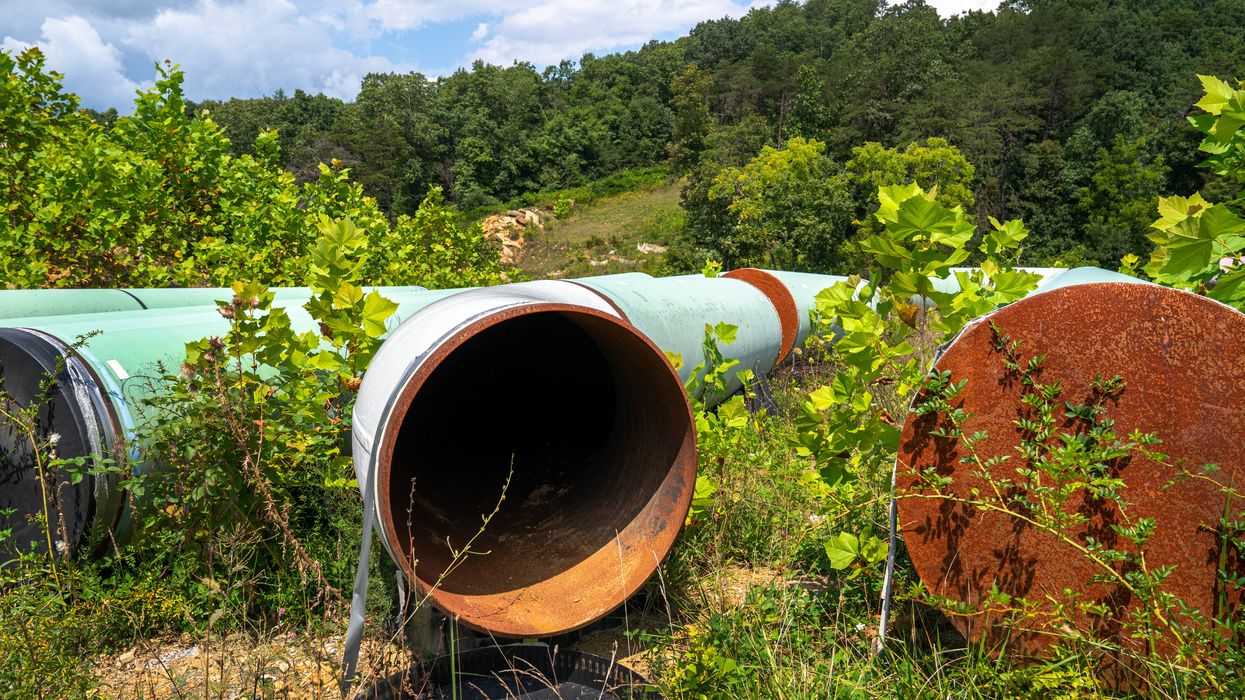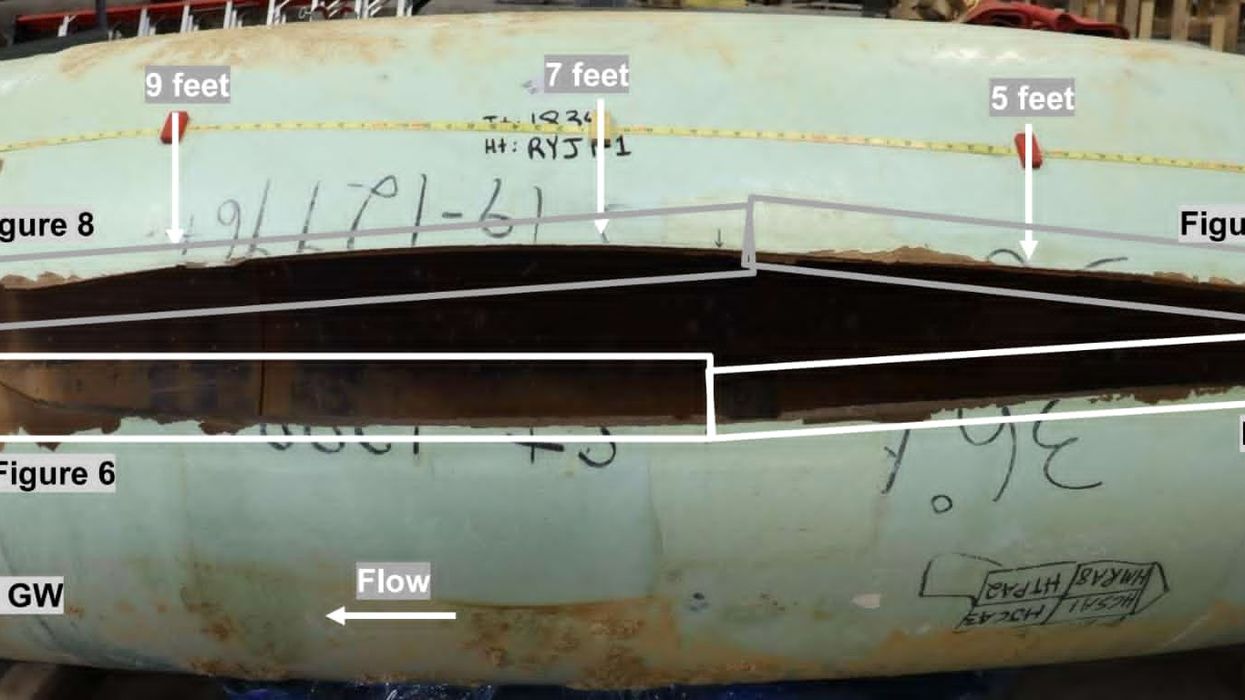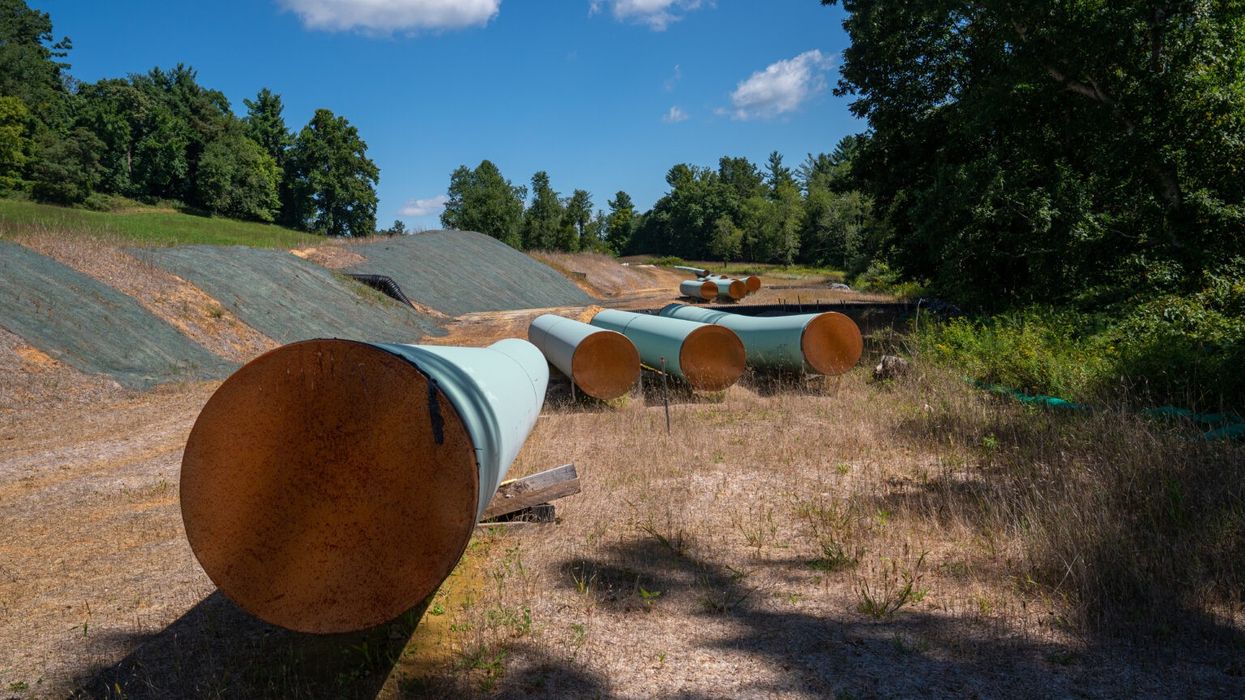MVP sent the 43-page report to the Pipeline and Hazardous Materials Safety Administration (PHMSA) on August 28, a day before the report was filed with FERC. In June, PHMSA and MVP entered into a
consent agreement to resolve a 2023 notice of proposed safety order, which had alleged that conditions existed along MVP’s route through West Virginia and Virginia that posed “an integrity risk to public safety, property, or the environment.”
This fight will continue until MVP is held accountable and this ruinous disaster is stopped before the unthinkable happens.
MVP’s report—and the company’s reaction to it—leave more questions unanswered than answered.
But one thing is clear: MVP tried to mislead PHMSA and FERC, as well as the press and the public at large, by including with the report filing a two-page cover letter that downplayed the incident and omitted crucial information contained in the report.
Also troubling—and unexplained—the report went through three drafts, dated July 23, August 1, and August 21. It was prepared by risk management firm DNV GL USA, which described MVP as its “customer.”
MVP provided DNV with a 12.5-foot section of pipe that contained the burst elbow fitting as well as two smaller sections (1.5 feet and one foot) from a “sister fitting” from the same test section.
MVP claimed in its cover letter that the sister elbow fitting was the only piece of pipe along the 303-mile long pipeline that had a “matching pedigree.” It gave no supporting evidence, nor did it even describe what it meant by “matching pedigree,” and DNV did not address the claim, much less verify it.
DNV did tensile tests on the blown pipe and “duplicate tensile tests” on the two samples from the sister fitting. The purpose of the analysis was “to determine the metallurgical cause of the failure and identify any contributing factors.”
DNV concluded that “the elbow fitting failed at the longitudinal seam weld as a result of ductile overload.” Ductile overload is
“the failure mode that occurs when a material is simply loaded to beyond its ultimate tensile strength.” That seems simple enough. Indeed, it is almost self-evident. Obviously, the pipe burst because pressure was put on it that was beyond its capacity to bear. But that does not tell you why there was ductile overload.
A Tale of Two Pipes—and Two Defects
DNV reported that “a majority of the failure was at or near the fusion boundary of the seam weld metal and base metal, indicating a lower tensile strength at or near the fusion boundary compared to the base metal and weld metal.”
That brings us to the second goal of the testing: to determine contributing factors. And that’s where the report gets very interesting—and very scary:
Contributing factors to the lower tensile strength at or near the fusion boundary was (sic) softening of the base metal mid-thickness... and possibly a yield strength lower than the requirement as the base metal yield strength of the sister elbow fitting did not meet the yield strength requirement.
Here, DNV is talking about two different defects in the pipe that burst, and a different defect in the sister pipe.
First, there was inadequate tensile strength
, which is the maximum stress that can be applied before an object breaks, in the pipe that burst.
Second, there was possibly also inadequate yield strength, which refers to
the maximum stress before an object’s shape permanently changes, in the pipe that burst. The evidence for this is that “the base metal yield strength of the sister elbow fitting”—which MVP admitted had a “matching pedigree”—“did not meet the yield strength requirement.”
Of note, the inadequate yield strength of the sister fitting was not in a welded seam, but rather in the base metal of the pipe itself.
Two pipes tested.
Two pipes defective.
Two different defects.
MVP Pipe Fails to Meet Industry Standards
Taking things further, DNV concluded that “the tensile properties of the sister elbow fitting (base metal) do not meet the tensile requirements for MSS SP75 Grade WPHY70 steel at the time of construction as the yield strength is lower than the required value of 70 ksi; the values are also lower than the MTR value of 70.9 ksi.”
As DNV noted,
MSS SP-75 requires a minimum yield strength of 70 kilopounds per square inch (ksi). The two sister elbow samples had a yield strength of 63.5 and 66.8 ksi.
In plain English, the sister elbow would be expected to permanently deform at a level of stress below what was required by industry standards, and the elbow that burst would be expected to break at a level of stress below what is required by industry standards.
Presumably, it is not good for any section of MVP to be either susceptible to permanent alteration or, worse, a straight blow out, when subjected to high pressure. The tested pipes were subject to both. It is terrifying, when one considers that MVP carries explosive methane gas—which is pressurized at up to 1,480 psig—that
people live well within the pipeline’s blast zone.
Yet Another Defect in MVP Pipes
And it gets worse.
DNV reported that there was a separate problem altogether: The sister elbow pipe’s fracture appearance transition temperature (FATT) value, which is the temperature at which the steel’s fracture appearance goes from being mostly flexible to mostly brittle, was “higher (poorer) than typical when compared to 2018 vintage line pipe steel.” Simply put, this means that the sister elbow DNV tested was more susceptible to cracking as compared to other pipe steel made in the same time period.
MVP Misleads and Buries the Truth
Mountain Valley Pipeline’s cover letter did not mention any of these problems.
Instead, MVP simply said that its pipeline burst on May 1 “due to a manufacturer’s defective weld,” on one pipe elbow. MVP bragged that a sister fitting “was proactively removed… to provide material for a portion of the mechanical testing aspect of the failure analysis,” but conveniently omitted the fact that the second fitting suffered from multiple manufacturing defects. Incredibly, MVP then misleadingly stated that “a single failure,” when there actually were two defective pipes (out of only two tested), was “a negligible fitting failure rate.”
That’s not even accounting for the fact that this was not the only “failure” that MVP experienced during hydrostatic testing. On June 4, a “jumper pipe” burst, sending a geyser of water hundreds of feet into the nighttime sky and then into a stream that feeds into the Roanoke River. Local residents
caught the incident on video. MVP has yet to provide a full explanation of exactly what occurred.
As to the May 1 pipe burst, MVP no doubt was betting that reporters would not dig through 43 pages of highly technical material and instead would rely on MVP’s two-page “summary.” And indeed,
with one notable exception, virtually all media outlets did exactly that. Many simply reprinted a story circulated by The Associated Press, which parroted a separate blogpost from MVP that noted that the report found that “there was no evidence of external or internal corrosion.”
By highlighting that DNV found no evidence of corrosion, MVP was cleverly suggesting that widespread concern about corrosion of MVP’s pipes is unfounded. However, concerns about corrosion do not focus on pipes, like the ones at issue here, that were installed and buried in 2018. Rather, the danger of corrosion focuses on the fact that most of the pipeline was installed in 2023 and 2024 using pipes that had been baking in the sun for many years after construction was halted in 2018 and thereafter by federal courts and, in one brief instance, by the Virginia Department of Environmental Quality. In fact, according to
federal court testimony from an MVP executive in 2018, the pipe needed to be installed within one year to avoid having the sun degrade its protective coating, which is designed to prevent corrosion.
MVP Wants Everyone to Take Their Word for It
All of this is very troubling. MVP has a
long history of flouting the law, as evidenced by the fact that it has been fined millions of dollars and cited for hundreds of environmental violations as far back as 2018 and as recently as last month.
Now MVP wants those who live along the route and others concerned to accept their claim that the sister elbow fitting it gave to DNV for testing was the only pipe among the 2,500 fittings and thousands of other pipes along the route that had a “matching pedigree” with the pipe that burst, whatever that means, despite the fact that no one—not even DNV—has verified or even evaluated that claim.
MVP likewise does not want anyone to wonder why DNV produced three drafts of the report for its “customer,” MVP. Who knows what MVP asked to be added, deleted, or changed between July 23, when the first draft was completed, and August 21, when the final report was done? Nor is there any explanation as to why MVP waited until August 28 to provide the report to PHMSA.
In short, the people who live next to this polluting and dangerous nightmare, as well as the public at large, are left with many questions and very few answers. And regulatory agencies, whose job it is to protect the public, are simply asleep at the wheel.
As Russell Chisholm, co-director of the Protect Our Water, Heritage, Rights Coalition (POWHR), a local advocacy group,
commented:
After four months of waiting, communities near the pipe rupture finally have details from MVP on what caused the pipe explosion during testing. The lab hired by MVP blames the rupture on weak steel and a defective weld. This is a pathetically predictable outcome; we know the MVP has used shoddy materials for their rushed construction job on this massive methane pipeline project. This is yet more evidence of the threat MVP poses to everyone along the route, and why the government never should have greenlit this corrupt project.
Appalachia Is Not a Sacrifice Zone
MVP continues to assault Appalachia.
Week after week after week, MVP files environmental “compliance reports” that instead reveal environmental noncompliance, as sediment is deposited in once pristine and protected streams. This damage would be illegal but for the fact that Congress and the White House exempted this project from environmental laws by legislative fiat in June 2023. And just recently, MVP revealed that it is working to remedy an untold number of “slips,” a euphemism for landslides, that could rupture a pipeline that crosses 75 miles with slopes greater than 30%.
Being treated as a sacrifice zone, the people of Appalachia are left to protect themselves and each other.
It is the latest chapter in a centuries-old story.
But the people of Appalachia are strong—and they are not alone. This fight will continue until MVP is held accountable and this ruinous disaster is stopped before the unthinkable happens.
Because it is not just about tensile strength and hydrostatic testing.
It is about the people who live there. And the land they love.
And in the end, the people will win.


